Digital Drawing & Painting – The Forgotten Skills
Introduction:
This paper is a continuation of the blog post that you can find here…
The digital art medium has exploded in the last ten years with the introduction of the tablets from the Google Android and Apple platforms. An abundance of drawing apps now available from these platforms have allowed many people to get into drawing and painting in the digital medium. With the large smartphone displays available today, drawing can be as easy as using a pencil and paper.
The digital apps that appeal to the masses cater to a growing crowd of users who find it easy to and convenient to draw on these devices.
Most of us are familiar with learning the core art skills that can improve one’s ability in drawing and painting. These core skills have always existed in the traditional mediums but have been lost when it comes to digital drawing and painting.
This paper highlights how the core fundamental art skills have been overlooked in the digital medium and a possible way forwards. Any new art mediums (painting and drawing) should ideally be a natural extension of the other established mediums such as pencil, charcoal, pastels, oil and acrylics. In this way, we can expect the evolution of creative art to grow and flourish just like it has in the traditional mediums.
Evolution of the digital art medium:
To appreciate how digital drawing and painting has departed from the traditional way of creating art, we need to look at the evolution of digital art and how it came to be today.
Digital art has existed since the invention of the computer over fifty years ago (https://www.livescience.com/20718-computer-history.html) and the term is used for creating art on an electronic device (computer). The early computers were used for simple digital manipulation and very basic rendition of art. They were limited in capabilities due to the lower computing power and low resolutions of the computer screens. The artwork or animation created in these mediums was popularized by the demand for creative art in the growing gaming and software market.
The advent of the first desktop computers:
The first computers were limited in power with low resolution displays and only rudimentary artworks could be created [Fig. 2]. The digital artwork was primarily driven by the demand for increased computer usage in businesses and homes. The world wide web (www) had not gained prominence for another ten years.
Fig. 2 One of the earliest computers used for digital drawing and image manipulation.
When the IBM personal computer was popularized in the early 80’s we saw computers becoming available to a bigger audience [Fig. 3]. This led to a proliferation of software applications and the growth of desktop computers to a much wider audience. It allowed many businesses to own computers which were used for word processing, spreadsheets and entertainment. The Microsoft operating system and the Apple computers were the dominant players at that time and hardware and software were readily available from these companies. The growth in personal computers led to mass manufacturing of printers [Fig. 4]. This trend continued and the demand for more digital art became increasingly important and was propelled by the explosive growth of the world wide web that followed.
Fig. 3 Early computer the IBM PC
Fig. 4 Early 90s printers (dot matrix printer)
The World Wide Web:
The growth of the world wide web (www) fueled the demand for online content as more businesses went online. This in turn powered the next generation for digital art for businesses engaged in online content such as websites, marketing material and gaming. The demand for online graphics, illustrations and content developers continued to mushroom.
Around this time, the ‘graphics’ tablet [Fig. 5] was born which allowed one to use a pen attached to a computer and produce artworks with drawing applications. Software companies that produced drawing applications such as Adobe Photoshop became the main players. This made it possible for many people to turn to these applications and make a lucrative career as a digital artist. Around that time the world wide web grew in significance and the demand for online graphics grew in pace. Graphics artists, illustrators, web graphics artists and logo designers used these applications to create much of the digital art and content.
Fig. 5 Early tablets used for digital drawing with PC drawing applications
The graphics tablet was a better device than a mouse for doing precision graphics work required for logo design, illustrations, image banners and more. This placed more demand on the features available on the software applications to make artwork easier and faster to do. Demand for artists who were proficient with these applications grew and more people got into this profession as a career.
Many with a background in art saw this growing market and naturally decided to give it a try. However, many did not realize the steep learning curve involved to become a proficient user of these applications. A few persisted and soon they came to be known as digital artists.
It was only a matter of time, when people saw the value of the digital medium for creating artworks similar to traditional mediums. Digital artists began to publish more digital artworks on their computers which laid the groundwork for digital art to be made available online.
The digital artworks created in the digital medium were considered distinct from the artworks created with traditional mediums. It has always been viewed as such and kept the two mediums separate from each other. The skills required for creating digital artwork were very different to the well established physical mediums such as pencil or oils. It is perhaps ironic that we don’t use the terms like digital artist for artists working in the traditional mediums ie. oil artist, acrylic artist, charcoal artists.
Digital art becomes more accessible to the masses:
In the last ten years, tablets and phones became more powerful and popular and it has opened up digital drawing to more people. There are many apps from the Apple and Google stores that tapped into this growing market and many have acquired a firm footing in the digital painting and drawing market [Android: Ibis X, Artfinder, Sketch, Paintology Apple: Procreate]. Most of these apps evolved from the software that has existed in desktops and come packed with similar digital drawing tools. Many flocked to these apps to do drawings and was seen as an alternative to drawing with traditional mediums.
These simple touch sensitive devices from Apple and Android have made drawing more accessible to the masses. Many used their phones and tablets for creating digital art and it was much easier to use than the equivalent graphics tablet connected to computers. Although many purists of digital art viewed these devices to have less power and capability than their computer brethren using the graphics tablet.
The interest in drawing on phones and tablets also attracted many desktop professional artists to create art with these devices. As the power of phones and tablets grew from year to year, developers borrowed many of the features of the computer applications found in the PC/Mac and integrated it into their own apps. Some of the high end tablets from Samsung and Apple came with styluses and offered similar capabilities to the desktop applications.
Some applications like the Sony Sketch [Fig. 7] became hugely popular and were very popular with many newcomers to digital art. Sadly, this app was retired a few years ago as the company could not maintain it. At the peak of its height, the Sony Sketch app had a half a billion downloads from the Google play store. It attracted users from all around the world and especially Japan which was the country of origin. One of the highlights of this app was the social sharing feature where users could share their artworks with other users.
Sony Sketch;
The attraction of the apps on the Apple and Android platforms were influenced by various groups of people.
- Graphic artists who were already familiar with the early tools of the graphic tablets connected via computers
- Regular people who were interested in drawing and want to experiment on the popular tablets
- Traditional artists who wanted to extend their artistic abilities to the digital medium
The big influencers of the digital art medium were primarily driven by artists who were proficient in the advanced desktop applications like Adobe Photoshop. This attracted more newcomers to the digital art medium. The users continued to grow and soon realized the portability and user friendliness of these devices. You can see many of these digital artworks on social sites like deviantart, blogs, instagram, pinterest, facebook, youtube and more.
Most of the digital artworks produced can appear animated or have a digital feel to it and it is a direct manifestation of the way the drawing software is used. The heavy reliance on the digital tools of the apps makes the final artwork appear to be computer generated. Most users typically use these digital features with some listed below.
- Color fill – where you can add regions of color with a touch of a button
- Layers – where you can separate the artwork to work on different regions of the art without interfering with another
- Line smoothing – this artifact alone can contribute to the digital look of the artworks found. It corrects and deformities or imperfections in the drawing strokes.
- Blending – where you don’t have to worry about tones like in traditional
- and many more
- Shapes – one can create circles, squares and other types of shapes
The reliance on the use of the digital tools available in the apps became the normal way to create art. It can increase the speed at which digital art is made as it does not require users to have any prior experience of drawing or painting. For example, the auto corrections means that they don’t have to worry about making imperfect drawing strokes. Shading which is another example of the core drawing skills can be done easily and automatically with the blending tool. You can see how the reliance on these tools will likely produce artworks that can be typically distinguished from artworks created with traditional materials. A good place to appreciate how users’ opinions differ when it comes to digital and traditional art can be found on the Quora platform.
The digital medium led many traditional artists to assume that much technical skills were required to create any type of digital artwork. These differing viewpoints are further reasons why the two mediums were not considered to be on the same level.
The trend for the digital medium was to continue to provide more features to make artwork easier and faster. You will note that the original aim of the drawing and painting software was to cater to the online market. The market for the original software applications were intended for a group of people to serve the grown needs of digital art. When it came to devices like the tablet and phones, some app developers saw the need to provide drawing apps that mimicked the traditional mediums [
Papercolor, and other art apps that have the minimum of features like Microsoft fresh paint.
https://apps.microsoft.com/store/detail/fresh-paint/9WZDNCRFJB13
The aim was to encourage more artists familiar in the traditional territory to move to the digital medium. The Microsoft fresh paint program [https://medium.com/@ferdousekhaleque/the-simple-truths-of-going-from-one-art-medium-to-another-183baf222b48] was one such example that exactly mimicked the real traditional materials of paint. Unfortunately, this method of painting and drawing did not prove to be a hit with many users despite its novel approach.
One of the important areas where many developers may have missed the mark are the training of the core fundamental skills in art. It is clearly lacking or overlooked in the digital medium but continues to maintain its importance in the traditional mediums.
The race to provide more features and functions continues to grow unabated and many are unfettered by this approach. There is very little information and awareness of the need for developing the core art skills applied to the digital medium. There are some attempts by artists to promote the art fundamentals but they are more often found in the traditional mediums. Fundamental teaching of art is limited and you can find this in the popular online teaching platforms such as udemy or domestika.
https://www.udemy.com/courses/search/?src=ukw&q=digital+art
https://www.domestika.org/?query=procreate
The subject of fundamentals are usually glossed over in the digital mediums and most of the teaching materials are biased towards the app and its features.
There may be good reasons for the lack of material on teaching the fundamentals of art. Firstly, fundamentals can appear too theoretical and teaching these core skills can appear to be dull and boring. After all, many students do not get to do the artwork that is directly relevant to the subjects they want to draw. Another problem may also be due to the teachers’ lack of understanding and an approach to teaching these relevant topics.
In art, many users prefer to learn by doing and the expectation is that ‘fundamentals’ will be learned by trial and error. In traditional mediums the fundamental skills are needed early in the drawing whereas in the digital medium there are many tools that fulfills that gap.
It helps to understand what the actual definition of art fundamentals are when it comes to painting and drawing in both traditional and digital [https://paintology.quora.com/Do-Fundamentals-of-Art-apply-to-Digital-Drawing]. Understanding the meaning of fundamentals applied to other subjects can help us better understand the use in art. If we look at fundamentals as applied to the teaching of Maths, a student can expect to solve a wider range of problems than just learning in rote fashion. Similarly, an F1 racing driver may have many controls within his fingertips but without knowing or practicing the dynamics of the car, he/she will be limited in their ability.
The solution appears to be making fundamental teaching to be interesting and insightful to the students. Fortunately, there is a way forward for the digital medium which will be explained in more detail. Let’s examine the differences of the traditional and digital mediums in order to learn the best approaches to teaching art fundamentals.
Understanding the differences in digital & traditional drawing & painting.
Painting and drawing in the traditional methods make use of simple tools such as a brush, pencils and the application of colors ie. paint, colored pencils or pigments. This way of painting and drawing has been done for years and we have seen great artworks from painters like Van Gogh, Monet, Constable and Cezanne.
Fundamental art skills are at the core of creating great art in the traditional mediums and past masters had demonstrated their art with their paintings and drawings. Many users of the digital medium are unaware of the importance of these core skills and do not apply it to their art. This has much to do with the lack of content and related information on this subject.
Artists experiment with different mediums and are still able to retain their core skills in art which they can apply to any new mediums [10]. Many traditional artists do not feel uncomfortable going from one art medium to another such as acrylics to watercolors or pencil to charcoal. It makes sense that the digital medium could also be considered a progression of these mediums. However, the digital medium grew in popularity due to other factors unrelated to the purest forms of creating art. The digital medium in the eyes of traditional artists is a whole new kettle of fish.
Many new users without any experience of drawing/painting can easily get into the digital medium and start creating art. The software application makes this possible because it has a wide array of tools for users to play with and takes away the need for learning core art skills. This is not possible in the traditional materials since some mastery of the use of the tools are required before becoming good at art. Traditional materials lends itself more to learning the core skills since only basic tools are used for creating art. This means that it enables users to remain focussed on the basic tools to expand their skill sets. For example, if we take the example of a pencil and paper, we need to understand tones, the intimate properties of the pencil, and how the graphite interacts with the paper. Tones and values are one of the essential components of drawing that is taught in art schools.
Today’s generation of users are much more confident with digital devices and are comfortable with various tools provided by the app. In terms of tools for the drawing application, it can do much of the heavy lifting for the user. For example, allowing you to draw shapes like circles, ovals, squares and filling with color with simple press of the button.
Apps have an extended range of drawing tools for users to play with and anyone can experiment and make simple drawings. This immediate gratification allows users to do more they can with just pencil and paper and can keep them engaged. Many will continue along this path to learn ‘drawing’ and would not need to turn to the core art skills. The focus automatically shifts to using the tools to do all the heavy lifting of drawing and painting. This will place a restriction on their ability to extend their inherent artistic skills in the digital medium. The heavy reliance on the tools will limit the types of artworks they can create as it will be constrained by the tool sets. To go beyond this, one needs to develop the core art skills.
Developers of the apps are not concerned with teaching the core skills of art as they are too busy understanding users behavior and incorporating more features. This is done at the expense of developing core fundamental art skills. This trend only leads to a further divide between the digital and traditional artists and the two will assume different paths for creating art.
The differences between the digital and traditional art mediums have opened up heated debates on this subject which you can find on the Quora platform [26]. One particular post shown below, has brought many professional artists onto the platform to raise awareness on foundational skills of art. Many of the comments are from professional artists and provide insight into their viewpoints and opinions regarding foundational skills in art.
There are many misconceptions about digital art and you can read more on the collection of articles written by the author, link below. There are also premature claims that digital art is not art since the computer is assumed to have done all the work.
Fundamentals of art mediums:
The differences in the two mediums begs the question whether the digital medium can be used in a similar fashion to the popular traditional mediums. Is it possible to use the digital medium with just a simple set of brushes and applying the colors? Can one make good paintings and drawings using just the digital brushes and colors only and ignoring all the other tools. This is a major departure from the current way of creating art in the digital medium.
In order to better answer this question, let’s first look into the methods of painting and drawing in the traditional mediums.
The traditional mediums have basic ways of drawing and painting. You have an applicator which can be a pencil, charcoal or a brush and apply marks or paints to a paper or canvas. This may appear to be very simple in its use but nevertheless we have all seen extraordinary works of art created with these basic tools. There is no reason to assume that other new art mediums could not be used in a similar fashion.
There are reasons why artists can stretch the capabilities of art mediums to extraordinary levels with these basic tools alone and it boils down to mastering art fundamentals and techniques. It requires a deep understanding of the properties of the medium and then translating it to the creation process.
The key to great drawings and paintings are a result of techniques and artistic skills developed by the artist through a great deal of practice [links below]. The digital medium can be and should be looked at in the same manner as the traditional mediums. You have an applicator like a stylus and you pick colors from the digital color palette and apply to the digital canvas. In effect you have an art medium that is in principle not that different to traditional mediums.
Art students who cannot draw: Exploring the relations between drawing ability, visual memory, accuracy of copying, and dyslexia.
Art Students Who Cannot Draw: An Exploration of the Relations Between Personality, Dyslexia, Perceptual Problems and Drawing Skills.
The artist should in theory create art in much the same manner as creating art with traditional materials. All that is required is to understand and master the properties of the digital brush and how it interacts with the digital screen. The proof that this method actually works has been demonstrated by many works of digital art created by the author. One such example [Fig. 14] of artwork created with one brush of the Paintology drawing app. This drawing of the ‘froggies’ was made on a Samsung Note 10+ phone using a stylus and the Paintology app. This drawing is a real example of how drawings using the same approach as traditional can be made on the digital medium. To date, there have been many drawings made this way which you can find under the social profiles of the author [Links. 15]. The posts [Links. 16] show some of the ways that an artist in the digital medium can take to acquire core fundamental skills in art. It also shows that in order to make good drawings, one does not need to rely on the many digital tools that are found in the drawing apps.
Fig. 14 https://www.quora.com/What-are-some-alternatives-to-a-pencil/answer/Ferdouse-Khaleque
https://www.paintology.com/blog
https://www.instagram.com/ferdousekhal/
https://www.facebook.com/Paintology.apps
https://www.youtube.com/c/Ferdouse
https://www.youtube.com/c/Paintology
https://www.quora.com/profile/Ferdouse-Khaleque
https://paintology.quora.com
https://medium.com/@ferdousekhaleque
Links. 15
https://www.quora.com/As-a-beginner-is-it-better-to-start-drawing-on-paper-or-is-it-the-same-digitally
https://www.quora.com/Can-you-use-a-phone-as-a-drawing-tablet
https://www.quora.com/Is-learning-to-digitally-draw-and-color-difficult-for-you
Links. 16
Clearly most digital artists choose to use the myriad of tools that come with the app rather than be restricted to one or two brushes. For example, when coloring a region in a painting you have a color fill tool that allows you to select the region and simply press a button to fill with color. It is a faster way to color than doing it manually. Similarly when blending, which is one of the hardest skills to learn, you can use the cursor to map out the region to blend and create a perfectly blended region. The reason why many choose to use the tools is because it is a lot faster and easier than doing by hand.
Creating digital art as described above will produce perfectly proportioned lines and regions, making the artwork appear computer generated. It gives the impression that digital art has been created by a machine and less from human intervention. It is also the reason why many question the authenticity and value of digital art when compared to traditional art [https://www.quora.com/Is-fine-art-worth-more-than-digital-art-Is-there-a-way-to-market-digital-art-so-that-it-can-be-sold-at-an-equal-value]. With many digital artists choosing to use tools over learning the art skills, it becomes a challenge to bring more awareness to this subject. However, removing the myths of drawing tools as the only way to create digital art can bring back interest from the traditional artists who have remained on the sidelines when it comes to digital art.
Hesitancy of the digital medium:
Reasons as to why traditional artists are hesitant to move to the digital mediums maybe for other reasons too. Some of these are listed below.
- The idea of having to draw on an inert glass surface, it doesn’t have the feedback or feel like the pencil or paper
- The need to have much technical skills and there will be a steep learning curve
- Doubts in creating art like the traditional mediums due to the many digital art found online which lack a natural look like traditional.
These are all incorrect presumptions which stem from a lack of knowledge and limited practice with the digital medium.
Comparison of the properties of the digital and traditional mediums:
In traditional mediums, the artist uses the applicator (brush or pencil) and applies this under their control to paper and pencil. Their degree of art skills is determined by their deep appreciation of the properties of the brush, color and paints. The same can hold true for the digital medium.
Since the digital medium for creating art can be used like any of the other natural mediums as shown earlier, it is noteworthy to see how versatile the digital medium can be for creating art. Digital technology allows us much control over the colors, resolutions etc. we can get an idea of the degree of ‘control’ an artist has under their control in order to create art. The properties that are found in the oils, charcoal, watercolors, acrylics are well understood by the artist and we need to understand how this is represented in the digital medium.
We can look at the comparison of a real pencil and a ‘digital pencil’ to get an idea of the real comparable properties. The table [table. 1] is a good example of the differences and the properties as applied to drawing.
Table 1 Comparison of a traditional brush and a digital brush
You will see from the table that the versatility or bandwidth of the digital medium is theoretically higher than the simple pencil and paper. The question arises, does this increased bandwidth actually translate to superior drawings in practice? The answer is yes, in which you can see real examples of digital drawings and paintings made on phones and tablets provided below
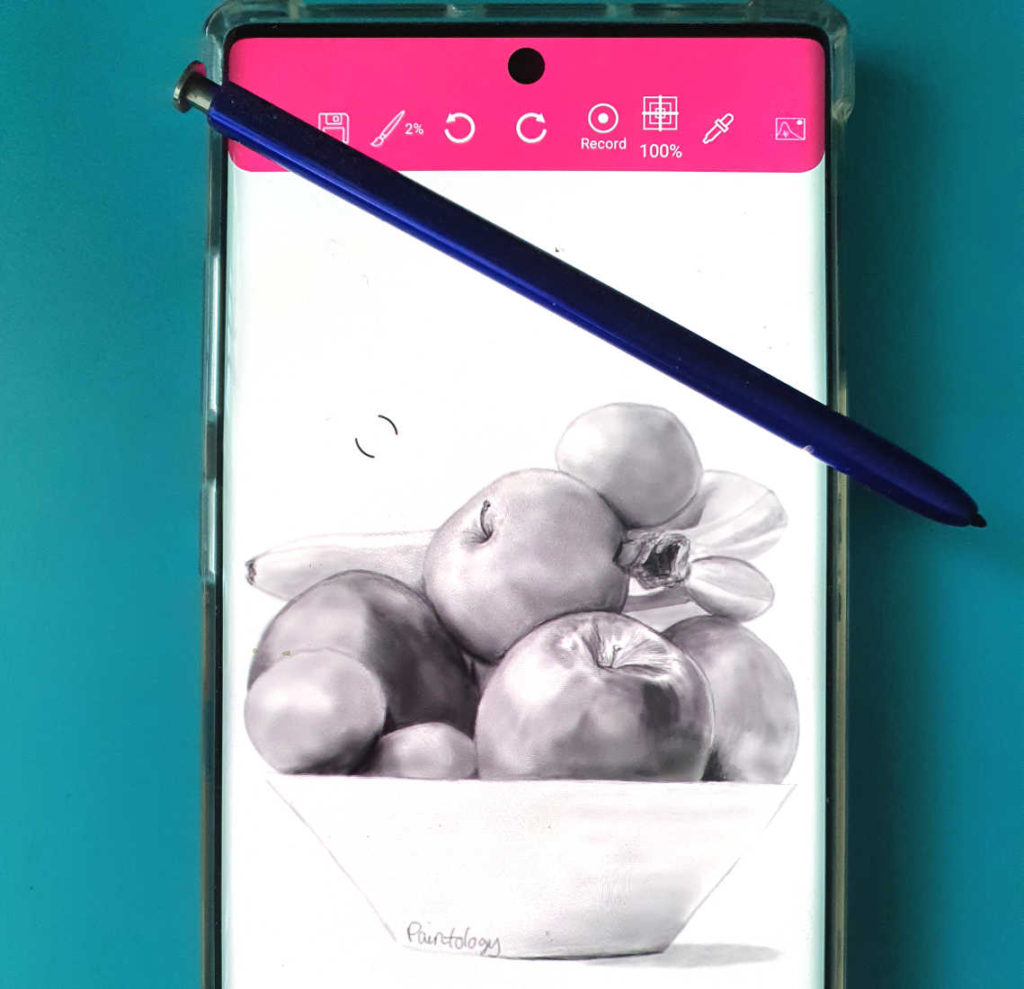
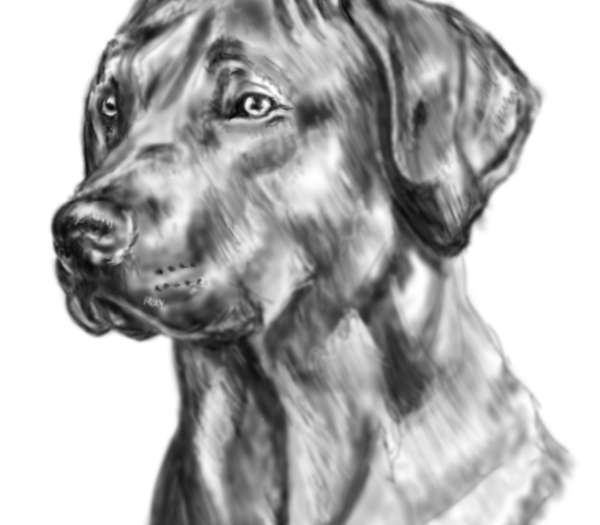
Bringing awareness & understanding:
It has been pointed out earlier that the progression of the digital medium was a result of the demand for online content in art. The advent of tablets attracted more users to this medium and apps mimicked many of the features found in the original desktop applications. There were no teaching materials to ground users in the core skills needed for the digital medium but many tutorials can be found on the use of the digital tools, links below.
https://www.udemy.com/courses/search/?src=ukw&q=digital+art
https://www.domestika.org/?query=procreate
Having already demonstrated that digital art is possible by using the ‘fundamental’ skills approach, it is clear a big gap exists. It will require many people to rethink their whole notion of what digital art is. Promoting this awareness to the existing base of digital artists can prove challenging since they will always question the approach to manual painting when tools are readily available to do the same.
One of the ways to bring back the art fundamentals to the digital medium is to develop an app that focuses on the core principles of creating art. This has been the approach taken by the author with the development of the Paintology drawing app.
https://play.google.com/store/apps/details?id=com.paintology.lite
A way forward:
The Paintology app was created by the author Dr. Ferdouse Khaleque owing to his passion for technology and art. Back in 2012 he realized that the market was growing rapidly with digital drawing apps on the Android and Apple platforms. He had some experience with traditional art and soon started dabbling in the digital medium to produce drawings. At that time, it was not obvious to him why he would use the minimum tool sets to create art. As he clearly saw a niche in the market, he decided to go about building a drawing app for others to be able to draw on their phones and tablets. Since then, some of the popular apps have grown to a billion user base in the Google play and Apple stores [6].
He has spent the last five years actively developing and promoting the Paintology app to address the key areas highlighted in this article. The Paintology app is in its 49th iteration and has incorporated essential features not available on the other apps. It includes many methods and approaches to teaching fundamentals through practice and some of them are listed below [25].
Trace drawing example:
Paint by numbers example:
Pencil drawing example:
3D drawing example:
The key to providing foundational skills to users is to allow users to be grounded in the core skills through practice. We have seen how the digital medium attracts many users to drawing since they are always engaged by actual practice. By addressing some of the key components of art skills and taking a leaf out of the traditional mediums, we can provide a platform for users to learn fundamentals through pracice. As a result, the Paintology app incorporates many of the established methods of creating art in traditional and incorporating into the app.
The following are a few modes of creating art which mainly comprises tutorials, approximately 500 and is centered around developing key skills and making the process of creating art fun.
Trace Drawing – This is a familiar drawing technique that enables artists to expand their skills in form, perspective and of course drawing strokes. Many beginner artists make the mistake that it is a form of cheating but any aid to help with drawing and painting is beneficial. Many of the past masters such as De Vinci, Picasso, Monet have all used these helpful aids to increase their skills.
Trace drawing is a lot more versatile with the digital medium and you can see how this can rapidly improve your art skills from the video .
Paint by Numbers – This is a much loved hobby that comes in kit forms with a canvas, pots of paint and brushes. Paintology has something very similar where you select colors for the numbered region and then use your fingers or a stylus to color. There are over 200 drawings that you can do and organized by subjects and levels. Here is a good example to watch. Paint by numbers improve the core skills in coloring, drawing strokes, form and accuracy.
Pencil Drawing – Pencil drawings is one of the most popular methods of creating art and loved by millions of people young or old. You just have to visit Youtube to see many of the drawings made with this media. The Paintology app has an excellent brush called the shade which is ideal for drawing on your phone. Below is one such example video made with Paintology that you can watch. Using the shade brush helps you to practice with tones which is fundamental to making good drawings.
3D Drawing – 3D drawing is a very fun way of drawing that helps you improve drawing skills by making something that can amaze your friends and family. Making 3D drawing is not that hard at all and even easier with the Paintology app.
The ideas for these modes of drawing and painting is to enable users to learn the core skills in art through practice. The app provides almost five hundred custom tutorials to enable users to use each mode of drawing and painting that will help them build the foundational art skills.
Since the Paintology Drawing App has been developed from the ground up, it instills and embodies the philosophy of fundamental painting and drawing. Its approach has always been to train and teach the core skills required for artistic skills and growth. It aims to fulfill the growing gap which other digital apps have ignored thus far. The Paintology app has been available free to anyone who is fond of drawing and painting in the traditional mediums and wants to learn in the digital medium.
Since many users are creating digital art without any foundational skills, more people will learn of its importance and apply it to their own art creations. This may introduce more traditional artists to the digital medium and have a higher adoption rate of the digital art medium. In time, the digital medium may even be considered as a natural progression of the traditional mediums unlike today.
It has been demonstrated with real examples that digital art can reach a level of detail not possible with the tools alone. In comparison, someone who is grounded in the fundamentals will be able to produce drawings just like the traditional mediums [Fig. 14]. The drawing is based on the use of a single brush and selecting the necessary gray tones, in effect, just like drawing in the traditional mediums.
To be able to draw like shown above, one needs to be already good at drawing and have developed the core skills in art that has been learnt in the traditional mediums. With more users appreciating the fundamental core skills, there will be a natural transition of traditional artists to the digital medium. They do not have to harbor the wrong assumption that an array of digital tools are the only way to create digital art.
The transition to the digital medium is simpler and easier than one thinks, since it does not involve the steep learning curve to learn all the complex digital tools. It is ironic that many digital artists continue to make increasing demands on the features that apps should have. This approach is perfectly fine for the precision artworks required for gaming, online content, marketing and other needs. However, for those that want to pursue digital art from the simplicity of traditional art, the approach mentioned here is the way to go.
Learning fundamentals on the digital platform is faster and easier:
As a result of the continued development of the Paintology app, it has become more clear that the technology behind the digital medium makes learning fundamentals easier and faster. This naturally opens up opportunities to the methods of teaching art in schools, institutions and other establishments. The traditional way of teaching art can now transition to the online digital world where students can learn the fundamentals more rapidly and with relative ease. This can only help with a higher adoption rate of art in the school curriculum since art is considered an important subject in the development of learning.
Transitioning from traditional to digital art:
We should work towards narrowing the gap between digital artists and traditional artists and show the ease at which artists can transition to the digital medium. As explained earlier, the big divide between traditional and digital has primarily come about from the applications serving a specific industry. They were all designed to support the growing needs of graphics, web content, illustrations and other online marketing materials. Unfortunately newcomers to the digital art world will follow the rest of the crowd and will not know any better.
This in itself presents a potential market for transitioning traditional artists to the digital medium. It will require the teaching of fundamental skills that has been forgotten in the digital medium.
YouTube channels:
The Paintology and Ferdouse YouTube channels are dedicated to people who have enjoyed drawing and painting in the traditional mediums and to carry this into the digital medium.
To compare two similar drawings made on traditional and digital, you can watch the youtube videos of the drawing of a tiger.
You may find it hard to distinguish between the two drawings since no special digital tools have been used for the drawing except for the brush. This is further confirmation of the ‘natural’ progression of drawing and painting into the digital medium providing the core fundamentals have been learnt.
Since the Paintology drawing app has been developed from the ground up, it instills and embodies the philosophy of fundamental painting and drawing. Its approach has always been to train and teach the core skills required for artistic skills and development. It aims to fulfill the gap which other apps have ignored this far.
It has been shown that digital drawing lends itself to the skills that you have learnt in drawing with traditional pens and pencils, there is nothing uniquely different between the two. The digital medium with all the tools actually detracts users from the core skills required to create art as they continue to compensate for this deficiency with tools.
Drawing on the phone:
The drawings made using the Paintology app have shown the capability and the versatility of a simple drawing that can be made on the phone. You can check out other examples of drawings made on the phone and posted on Quora Profile. Most would not fully appreciate that such detailed drawing can be made at such a small scale. This is possible through the pinched zoom feature of the app which can make a 6 inch phone appear like an A4 drawing paper.
Online art classes:
We can leverage the free Google classes to attract students to learn more about art fundamentals applied to the digital medium. You can see an example of this fundamental course in digital art in the link provided below.
https://forms.gle/pvYQtbcQobYK4qyS8
New methods of digital painting:
The app has some unique features as a result of the continued development of the app and experimenting with technology to make teaching fundamentals easy and fun, link below. The app has up to 500 tutorials that have been developed over the course of five years. It enables users to practice and improve while doing, in effect, learning the fundamentals as they are creating art. These approaches to creating art are unique to the Paintology app.
The ease at which digital painting can now be done with the simple appreciation of the art fundamentals means that we can extend this approach to even bigger screens than just the phones and tablets [19]. Using the simple brush and tools of the drawing app, one can go about painting much like painting on a traditional canvas.
Further work is underway to bring more awareness including new methods and approaches to digital drawing and painting.
Summary:
Digital painting and drawing evolved to meet the specific demands of industry which was a result of the growing online content. This was further fueled by the world wide web that placed more demand for artists with skills in creating graphics, illustrations, online brochures and more. This led to the growth of advanced drawing applications such as Adobe photoshop to cater to this growing art community.
Another group of users grew rapidly with the introduction of digital tablets from Google Android and Apple play stores. This enabled users to draw on their phones and tablets and more developers incorporated features of the big applications found in the PC/Mac platforms.
Traditional mediums are all about basic tools to draw or paint but the digital medium leaned heavily on the digital tools. This created a big divide between the two mediums and the two were not considered to be on the same level. However, art as many people know it involves a great deal of training in the fundamentals skills of art. This requirement was not essential in the digital medium since many tools were introduced to make drawing and painting easier and faster. Creating tones which is one of the fundamental skills in art could be done with the press of a button in the digital medium. The same tones in the traditional medium would require some time for a skillful artist to recreate.
The digital medium can be used in a similar fashion to the traditional medium and it has been demonstrated with numerous digital artworks created by the author. However, it requires that the artist needs to be grounded in the core skills of art just like in the traditional mediums. This lack of awareness in creating digital art is entirely due to the heavy reliance on digital tools. Many traditional artists remain reluctant to transition to the traditional mediums basing the digital medium on technical proficiency rather than artistic skills.
The author discussed approaches to bring more awareness to the public and in particular through the Paintology drawing app. With more awareness and appreciation of the core skills applied to the digital medium, we can expect more traditional artists to transition easily to this medium.
About the Author:
Ferdouse Khaleque obtained his PhD from Imperial College, London in 1990 on the research in submicron lithography for fabrication of nano devices. His cutting edge research continued to bring important funding to the department after he left to pursue a career in industry.
He was a keen artist as a young man in school and when digital drawing and painting took off, he realized the huge potential for the future of art. It was a perfect opportunity to marry his technical and artistic skills together and launch the Paintology drawing app. With many iterations of the development of the app, he embodied much of the philosophy of the core skills of art into the digital medium. He has created many digital artworks that demonstrate the importance and power of the fundamental art skills applied to digital drawing and painting.
He continues to research in the technology and application of art as well as new methods and approaches to drawing and painting in the digital medium.

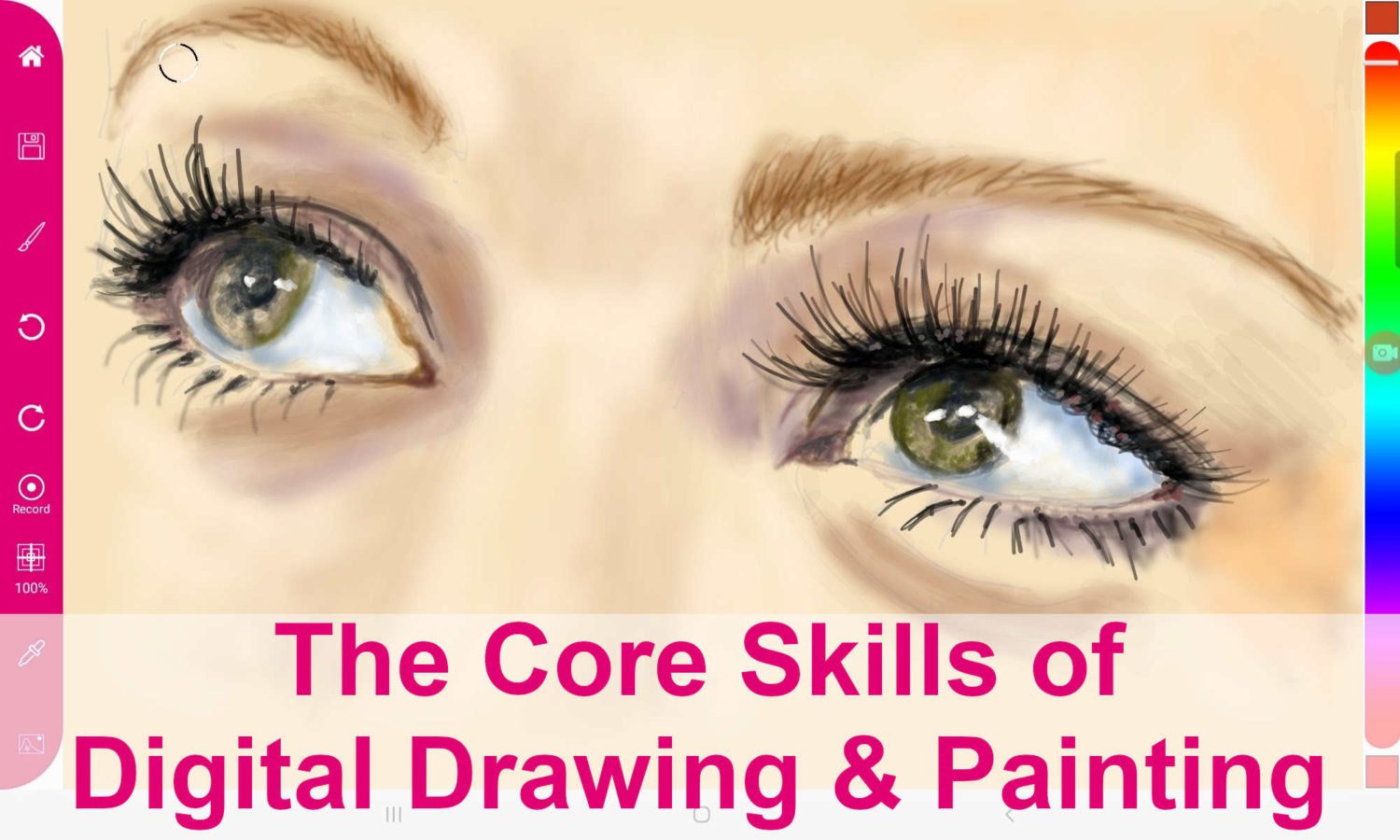

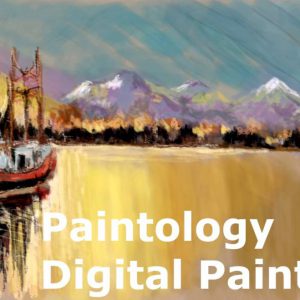
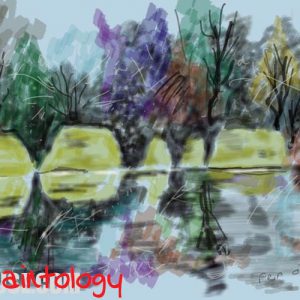
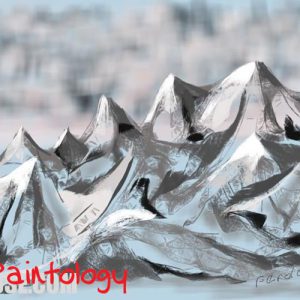
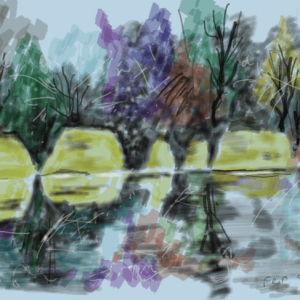
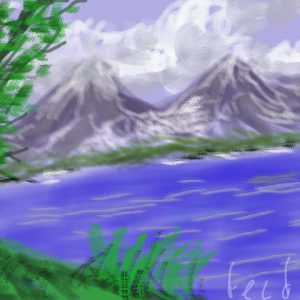
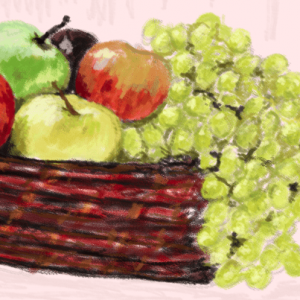
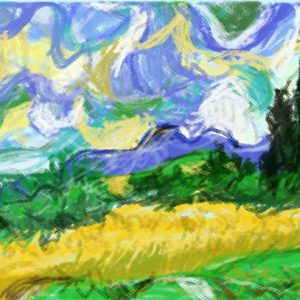
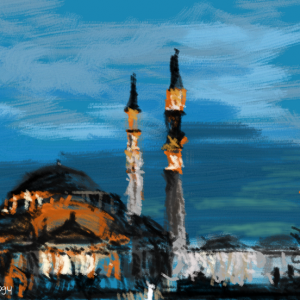
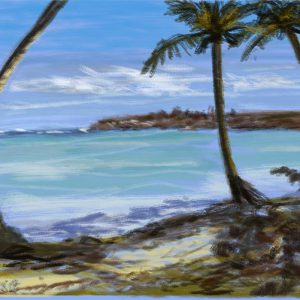
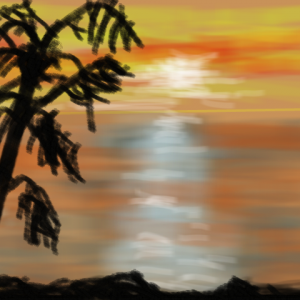

 Digital Canvas
Digital Canvas
Leave a Reply